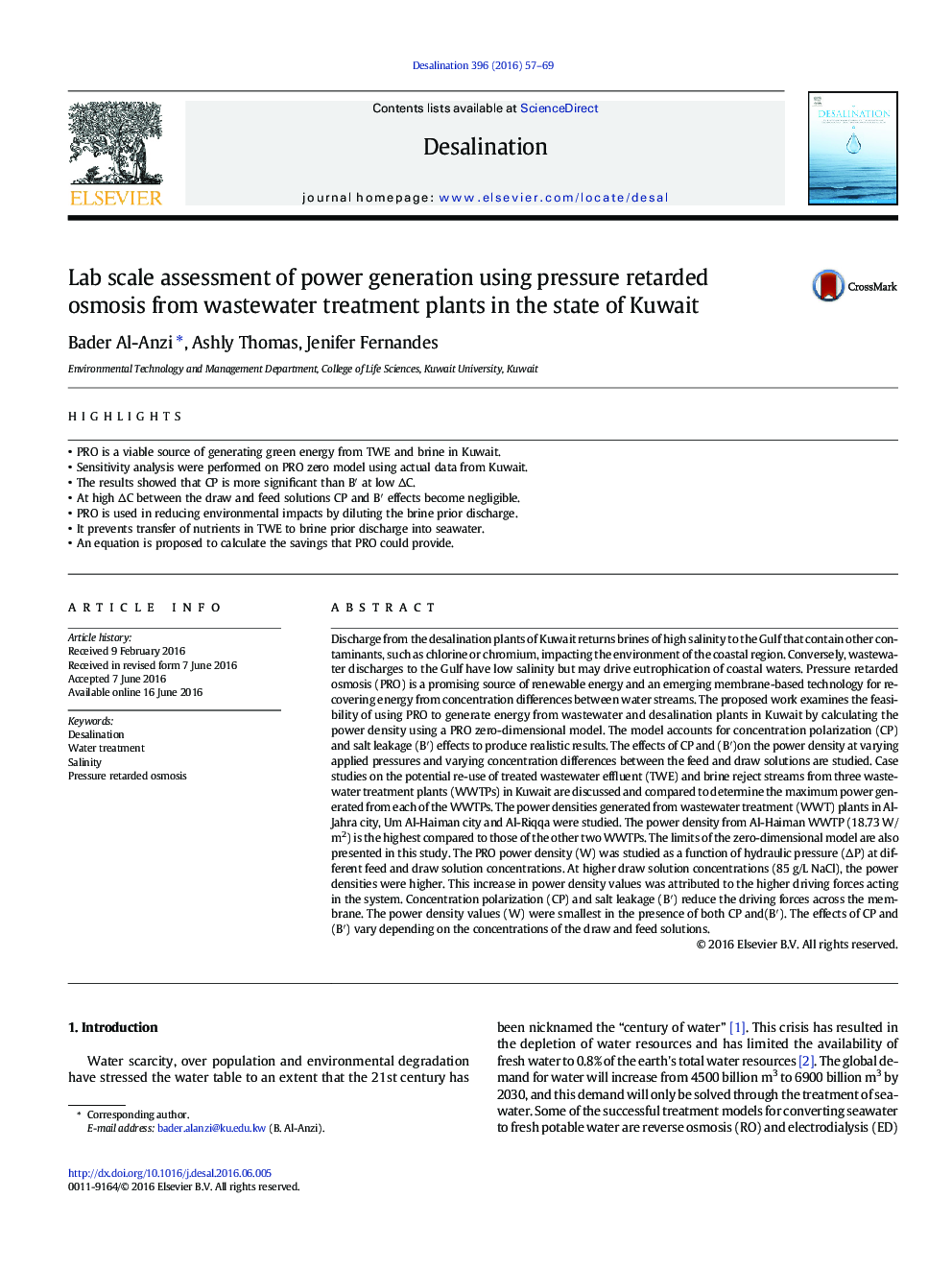| کد مقاله | کد نشریه | سال انتشار | مقاله انگلیسی | نسخه تمام متن |
|---|---|---|---|---|
| 622682 | 1455299 | 2016 | 13 صفحه PDF | دانلود رایگان |
• PRO is a viable source of generating green energy from TWE and brine in Kuwait.
• Sensitivity analysis were performed on PRO zero model using actual data from Kuwait.
• The results showed that CP is more significant than B′ at low ΔC.
• At high ΔC between the draw and feed solutions CP and B′ effects become negligible.
• PRO is used in reducing environmental impacts by diluting the brine prior discharge.
• It prevents transfer of nutrients in TWE to brine prior discharge into seawater.
• An equation is proposed to calculate the savings that PRO could provide.
Discharge from the desalination plants of Kuwait returns brines of high salinity to the Gulf that contain other contaminants, such as chlorine or chromium, impacting the environment of the coastal region. Conversely, wastewater discharges to the Gulf have low salinity but may drive eutrophication of coastal waters. Pressure retarded osmosis (PRO) is a promising source of renewable energy and an emerging membrane-based technology for recovering energy from concentration differences between water streams. The proposed work examines the feasibility of using PRO to generate energy from wastewater and desalination plants in Kuwait by calculating the power density using a PRO zero-dimensional model. The model accounts for concentration polarization (CP) and salt leakage (B′) effects to produce realistic results. The effects of CP and (B′)on the power density at varying applied pressures and varying concentration differences between the feed and draw solutions are studied. Case studies on the potential re-use of treated wastewater effluent (TWE) and brine reject streams from three wastewater treatment plants (WWTPs) in Kuwait are discussed and compared to determine the maximum power generated from each of the WWTPs. The power densities generated from wastewater treatment (WWT) plants in Al-Jahra city, Um Al-Haiman city and Al-Riqqa were studied. The power density from Al-Haiman WWTP (18.73 W/m2) is the highest compared to those of the other two WWTPs. The limits of the zero-dimensional model are also presented in this study. The PRO power density (W) was studied as a function of hydraulic pressure (ΔP) at different feed and draw solution concentrations. At higher draw solution concentrations (85 g/L NaCl), the power densities were higher. This increase in power density values was attributed to the higher driving forces acting in the system. Concentration polarization (CP) and salt leakage (B′) reduce the driving forces across the membrane. The power density values (W) were smallest in the presence of both CP and(B′). The effects of CP and (B′) vary depending on the concentrations of the draw and feed solutions.
Journal: Desalination - Volume 396, 17 October 2016, Pages 57–69
